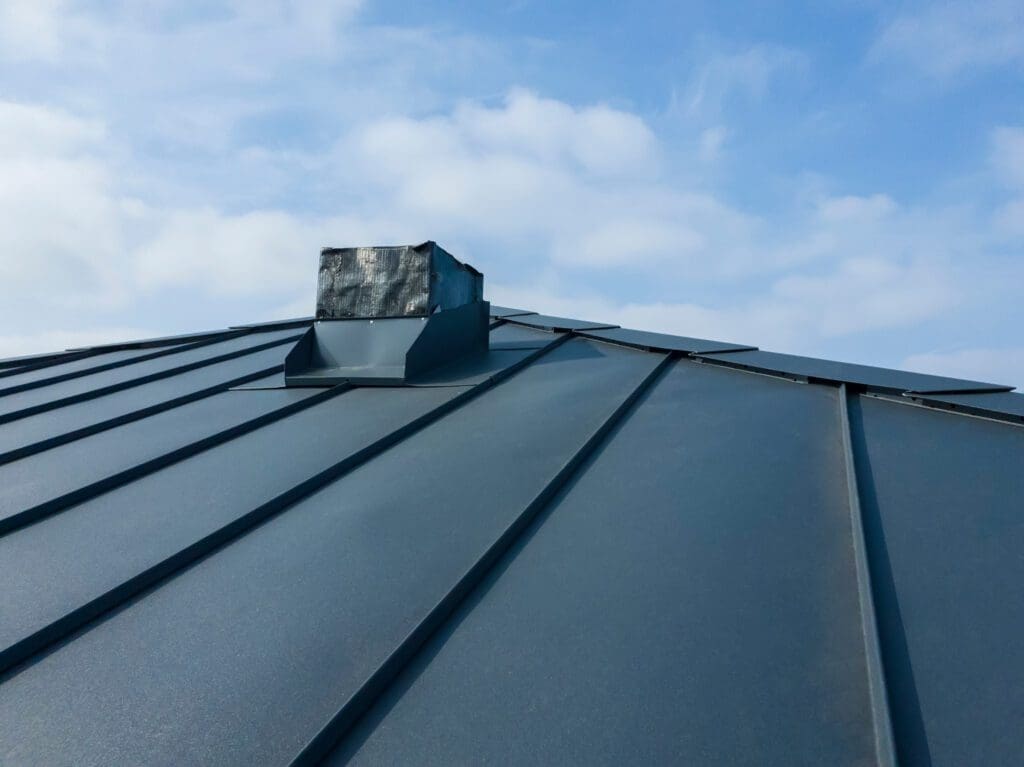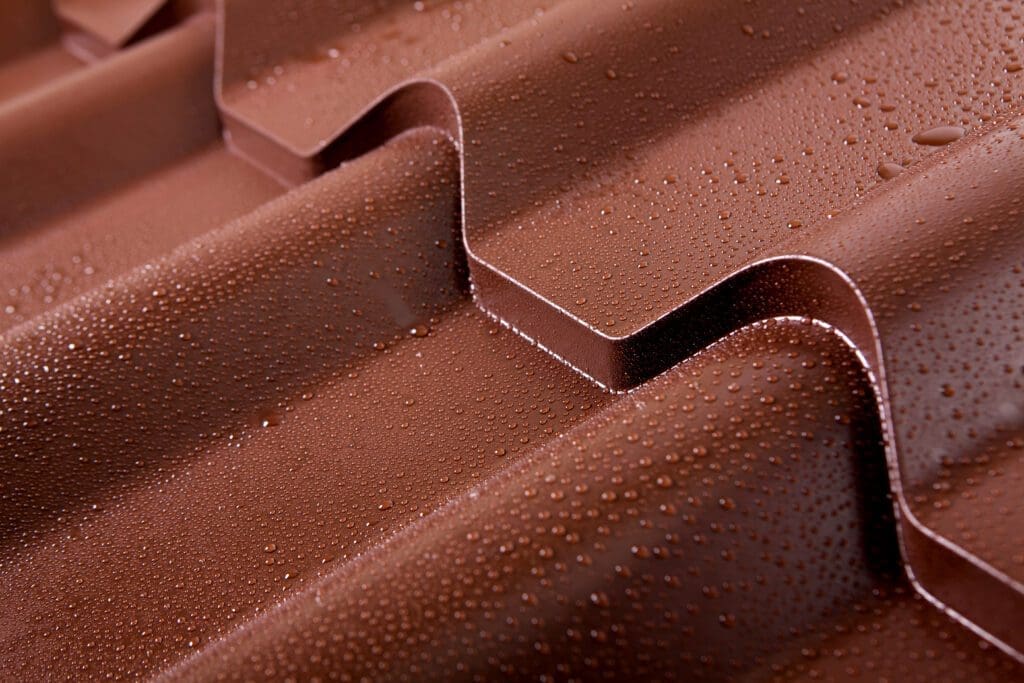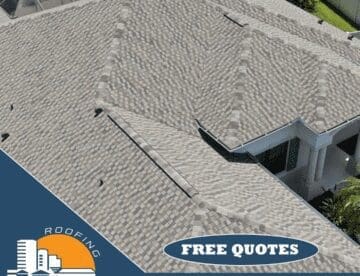In coastal areas like Florida, metal roofing makes a lot of sense. It’s durable, and you can choose from a variety of styles, colors, and profiles. All those choices come at several different price points, too. Two options that homeowners tend to be really happy with are Galvalume roofing and aluminum roofing. They’re similar, but do have distinct differences. So regarding Galvalume vs aluminum roofing systems, here’s what you need to know.
Galvalume & Aluminum Roofing Formats
First, both materials are formed into metal sheets that can be fastened with exposed or hidden screws. Exposed fastener, or “screw-down” roofing, is used more often on high-slope roofs where there’s little likelihood of puddling water on the roof. Concealed fasteners are usually specified for low-slope roofs and provide a cleaner look. They typically use metal clips that attach to the roof deck and snap into place to the roofing underside. The concealed-fastener systems are very secure and can endure high winds.
Concealed fasteners are also better for long runs of roofing material, as they accommodate expansion and contraction better than exposed fasteners. Aluminum, in particular, will expand and contract a lot with temperature changes, and the concealed clips accommodate that movement, called “thermal cycling,” quite well.
A new metal roof with concealed fasteners might cost twice that of an exposed-fastener roof. We’ll get into cost more later on in this post.

Aluminum and steel are also available as tiles that mimic the look of natural slate, wood shingles and shakes, and clay tile, as well as the standard standing-seam profile of other metal roofing. “Tiles” might be sort of a misleading term, as they’re often more like small sheets of metal, something like 2’x5′ or so. The manufacturers can make them any size they want.
Both types of roofing are available with a paint finish and unfinished. The manufacturers generally use the same finishes, and they’re high quality and durable. The paint finish will often carry its own warranty, by the way. So when you get your “lifetime” metal roof, you could end up with a warranty for the substrate, for the paint finish, and for the installation. You’ll have to go over the details with your contractor, of course.
Let’s get into the details of each material, and why you might choose one or the other.
What Is Galvalume Roofing?
You may not be familiar with the term, but Galvalume is a product invented by Bethlehem Steel Corporation in 1972. It’s a steel sheet with a coating of 55% aluminum and 45% zinc. That coating is extremely weather resistant and protects the steel sheets from rusting. Rust, of course, is the bane of steel, and Galvalume has proven its worth for about 50 years in protecting against corrosion.
The coating works like this: the aluminum layer is applied as a liquid and is simply a barrier between the raw steel and the atmosphere. The liquid zinc layer offers another layer of corrosion protection, and zinc also develops a patina that also prevents corrosion. Galvalume performs well enough to earn a 25-year substrate warranty under normal use.
In coastal areas, which are defined as within’ 1500 feet of the coastline, neither Galvalume nor aluminum will carry a warranty. That said, the harsh conditions of the coastline, especially the intense storms that are becoming more frequent, make a high-quality roofing material all the more important. Both Galvalume and aluminum qualify as durable, high-quality roofing
What Is Aluminum Roofing?
An aluminum roof is an upgrade product due to its inherent advantages over other materials. Aluminum’s major advantages are its light weight and its non-rusting nature. Aluminum does not rust and handles our salt air as well as anything. It provides most of the advantages of more expensive metals like copper and zinc, but costs substantially less. And as aluminum is available in different stamped formats made to resemble clay tiles and slate tiles, it can mimic those looks.
It also provides the appearance of those classic materials at substantially less weight. A clay tile roof, for example, might weigh 20 times more than an aluminum roof. That extra weight requires substantially reinforcing your home’s framing if you’re upgrading from asphalt shingles. Of course, that sort of construction costs a lot of money.
Compared to a Galvalume roof or other steel roof, aluminum dents more easily and is simply not as strong a material as steel. For the most part, though, the difference in strength is not a major issue. Roofing contractors will “hem” or wrap all sheet metals at the eave line, which is a strong and waterproof way to install the sheets. All ends of the sheets will be covered with a trim piece that is mechanically fastened with nails or screws. And all penetrations will get special waterproof fittings that work the same way whether you choose Galvalume or aluminum.
What’s the Cost of Galvalume vs Aluminum Roofing?
When you consider Galvalume vs aluminum roofing, Galvalume gives you a lower cost and inherently greater strength in the material. Aluminum, though, gives you absolute rust protection and lighter weight, but at a higher cost. So once again, here are your options, each with a different price point.
• Galvalume or aluminum sheets, either using exposed screws or concealed screws and clips. Exposed screws are cheaper and give a more “industrial” or “agricultural” esthetic. You can expect a roof with concealed fasteners to last longer.
• Galvalume or aluminum tiles that mimic slate and clay tiles, or wood shingles and shakes. These will always use hidden fasteners.

Of course, getting a few bids from top contractors is the only way to compare costs, but you can expect an aluminum roof to cost you 80-100% more. Here’s a handy guideline where you can get a rough idea of costs.
When you’re looking at website estimators, though, keep in mind that a roofing job has multiple line items, such as waste removal, roof access, condition of the existing roof, and so on. Ultimately, the installed cost is what matters. Often, you can expect professional roofing contractors to charge just one-third of the total cost for materials, and two thirds for labor and overhead.
We’re Here When You Need Us
If you’d like to talk about replacing your roof, give us a call at 813-373-9088. Our team has more than 40 years of experience in roofing. You can also use this form and ask us about Galvalume vs aluminum roofing and we will contact you.


